What is Japanese Onomatopoeia? [Definition, Meaning]
What is Mangaka? [Definition, Meaning]
What is Josei? [Updated Definition, Meaning]
What is Isekai? [Definition, Meaning]
What is Lolita? [Updated Definition, Meaning]
What is Senpai? [Updated Definition, Meaning]
What is Comiket? [Definition, Meaning]
What is Bishoujo? [Definition, Meaning]
What is Chuunibyou? [Definition, Meaning]
Top 10 Shoujo Manga Cliches
What is Mecha? [Definition, Meaning]
[Editorial Tuesday] What is the Difference between Manga, Manhwa, and Manhua?
THE Fate Series Timeline. What Order Should You Watch Them In?
What is a One-shot Manga? [Definition, Meaning]
What’s with All the Hang-ups About Episodic Anime? Plus, How to Watch Em!

Introduction
Episodic series have this odd relationship with the anime community. There are those that dismiss it them as not having a good enough plot to stretch across multiple episodes or a full season. There are those who gobble up episodic anime. Then, on the opposite end of the spectrum of the first point, there are fans that hate on those who dismiss episodic anime as having low intelligence and unable to read into anything. We don’t know where we fall per se, as not all anime are made the same, but generally speaking, the anime community finds episodic anime to be a hot button issue. Love em or hate em, we are going to break down what the deal is with episodic anime aka anime that tend to focus more on a resolution each episode, what the heck the purpose they serve is, and some great shows that you can watch IF you approach episodic anime properly. [ad_top2 class="mt40 mb40"]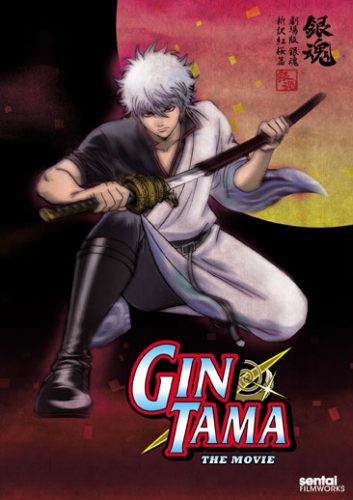
Episodic Meaning
The Cambridge Dictionary defines episodic when referring to a story as “episodic stories are divided into several parts, especially when they are broadcast on the television or radio”. Merriam-Webster also notes that this word is not new as the first written example of the word episodic came around in 1717. It defines episodic as “made up of separate especially loosely connected episodes”. That about nails it on the head. So basically, when there is an overall plot, say an evil villain trying to destroy the world, or a planet, a year spent in school, or a traveling individual, but the story is told with minor conflicts or stories that are resolved usually within an episode or two, then the show is episodic. Some big anime that could be considered episodic are shows like say, Msshishi, Jigoku Shoujo, Urusei Yatsura, Sailor Moon, Natsume Yuujinchou, and even classics that many know like Gintama, Cowboy Bebop, and Tenchi Muyo. Nothing wrong with labeling them episodic, but they are technically episodic as there is a bigger backstory, but each episode is not dedicated to that plot. It is instead sprinkled throughout multiple episodes. So then, why are people so bitter sometimes about episodic anime?Gimme Gimme Gimme My Name is Jimmy
 Back before the days of Netflix, (horrifying, I know), Crunchyroll, Funimation, Daisuki(RIP), and even the internet, you had one of two options to get an anime fix. 1. Buy or rent the show and watch it at home. Or 2. Wait until the anime came on TV to watch it. That’s it. With the advent of things like online streaming services and even the internet itself, you had to have patience and wait. Sure, you could watch maybe a few episodes at a time, but you would also have to wait until it came out. Oh well. That being said, streaming, simulcasts, and other things have created this demand within the anime community, and humanity in general really, to do something or get something when we want. If we want to watch it, we want to watch it right now. That is the overall problem though is that, when you marathon a show that was meant to be watched say once a week over twelve or twenty four weeks, then naturally you are going to feel like there is less plot.
Something I often see in forums and on reddit are certain anime fans that have this weird red badge of courage because they do not watch new anime weekly, but wait until the show is over to marathon it in one go. This then leads them to disliking and not fully enjoying certain shows because “they couldn’t get into it” or “it was not that deep”. Well, that is the goal of anime. Anime is meant to be watched weekly. When you hit a show that is meant to be watched weekly in just a few hours, naturally your experience is going to be different. Can you still marathon shows? Of course, you can. Why would we say no? However, one thing to note is that certain anime are harder to enjoy if you absorb all of it at once rather than letting it stew in your brain as it forms memories about the show. If you go at the show and finish it in four hours as opposed to twelve weeks, then naturally, you are less likely to recall events as well as someone who has seen it bit by bit over three, six, nine, twelve or more months! It’s simple logic. People who get mad over this are like people who have a choice between having a slice of cake or eating the cake all in one sitting. They then choose the latter option and find out there is no more cake and are enraged. It's like...What did you expect?
Back before the days of Netflix, (horrifying, I know), Crunchyroll, Funimation, Daisuki(RIP), and even the internet, you had one of two options to get an anime fix. 1. Buy or rent the show and watch it at home. Or 2. Wait until the anime came on TV to watch it. That’s it. With the advent of things like online streaming services and even the internet itself, you had to have patience and wait. Sure, you could watch maybe a few episodes at a time, but you would also have to wait until it came out. Oh well. That being said, streaming, simulcasts, and other things have created this demand within the anime community, and humanity in general really, to do something or get something when we want. If we want to watch it, we want to watch it right now. That is the overall problem though is that, when you marathon a show that was meant to be watched say once a week over twelve or twenty four weeks, then naturally you are going to feel like there is less plot.
Something I often see in forums and on reddit are certain anime fans that have this weird red badge of courage because they do not watch new anime weekly, but wait until the show is over to marathon it in one go. This then leads them to disliking and not fully enjoying certain shows because “they couldn’t get into it” or “it was not that deep”. Well, that is the goal of anime. Anime is meant to be watched weekly. When you hit a show that is meant to be watched weekly in just a few hours, naturally your experience is going to be different. Can you still marathon shows? Of course, you can. Why would we say no? However, one thing to note is that certain anime are harder to enjoy if you absorb all of it at once rather than letting it stew in your brain as it forms memories about the show. If you go at the show and finish it in four hours as opposed to twelve weeks, then naturally, you are less likely to recall events as well as someone who has seen it bit by bit over three, six, nine, twelve or more months! It’s simple logic. People who get mad over this are like people who have a choice between having a slice of cake or eating the cake all in one sitting. They then choose the latter option and find out there is no more cake and are enraged. It's like...What did you expect?
So… What to Do & Watch?
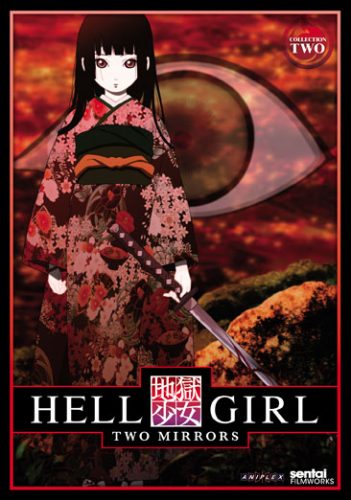 Well the first thing you can do is when you find an episodic anime that you want to watch, you can do one of three things: 1. Marathon it all at once wasting no time in between episodes, 2. Watch an episode or two a day, or 3. Watch it when you are in the mood for more. It might not be right away that you want more, but that is the beauty of anime. Here are a few episodic anime that are great for people who want to try testing out the series.
A great show for this argument is Nichijou. Nichijou follows the story of three high school girls who all have been friends since childhood. Mio, Yuuko, and Mai soon meet three others and their daily life becomes rather ridiculous and hilarious as weird becomes the standard. The three girls and their newfound friends suddenly watch that which should not happen, hilariously unfold in their everyday lives. Overall the plot is about comedic events that happen in everyday life. That’s it. Don’t sit down thinking that the universe is about to be defended from an evil because it is not going to happen.
Gintama is the same kind of setup. The story follows Gintoki, Shinpachi and Kagura as they work their jobs at Yorozuya as jacks-of-all-trades. The backstory is that aliens have invaded earth and rapidly modernized Japan while banning swords thus samurai no longer have a place in society. That’s it. It’s a gag series full of parodies. It has not stopped millions of fans from loving it though. It is a classic.
Jigoku Shoujo (Hell Girl) is about a little girl who, with the help of her servants, takes out hitmen like contracts on people and then dispatches of them ferrying them to Hell. Each episode generally speaking, she sends someone to Hell. The bigger backstory though is how she got here and what she plans to do with orders that she is given by the Lord of Hell, her boss, when she does not agree with them. That is how this series works. Note: Can be a little too realistic. May want to take a break between episodes.
Mushishi is yet another anime about a wandering medicine man of sorts who deals with supernatural beings and events that affect everyday, normal humans. Each episode or two, he meets someone who eventually will tell him their tale of how they are being mysteriously afflicted. This then leads to him either knowing what to do, or uncovering the spirits that are messing with people. The overall plot is more so about watching the characters develop than a story itself, but nonetheless, this seinen classic is sure to charm you if you go about it correctly!
Well the first thing you can do is when you find an episodic anime that you want to watch, you can do one of three things: 1. Marathon it all at once wasting no time in between episodes, 2. Watch an episode or two a day, or 3. Watch it when you are in the mood for more. It might not be right away that you want more, but that is the beauty of anime. Here are a few episodic anime that are great for people who want to try testing out the series.
A great show for this argument is Nichijou. Nichijou follows the story of three high school girls who all have been friends since childhood. Mio, Yuuko, and Mai soon meet three others and their daily life becomes rather ridiculous and hilarious as weird becomes the standard. The three girls and their newfound friends suddenly watch that which should not happen, hilariously unfold in their everyday lives. Overall the plot is about comedic events that happen in everyday life. That’s it. Don’t sit down thinking that the universe is about to be defended from an evil because it is not going to happen.
Gintama is the same kind of setup. The story follows Gintoki, Shinpachi and Kagura as they work their jobs at Yorozuya as jacks-of-all-trades. The backstory is that aliens have invaded earth and rapidly modernized Japan while banning swords thus samurai no longer have a place in society. That’s it. It’s a gag series full of parodies. It has not stopped millions of fans from loving it though. It is a classic.
Jigoku Shoujo (Hell Girl) is about a little girl who, with the help of her servants, takes out hitmen like contracts on people and then dispatches of them ferrying them to Hell. Each episode generally speaking, she sends someone to Hell. The bigger backstory though is how she got here and what she plans to do with orders that she is given by the Lord of Hell, her boss, when she does not agree with them. That is how this series works. Note: Can be a little too realistic. May want to take a break between episodes.
Mushishi is yet another anime about a wandering medicine man of sorts who deals with supernatural beings and events that affect everyday, normal humans. Each episode or two, he meets someone who eventually will tell him their tale of how they are being mysteriously afflicted. This then leads to him either knowing what to do, or uncovering the spirits that are messing with people. The overall plot is more so about watching the characters develop than a story itself, but nonetheless, this seinen classic is sure to charm you if you go about it correctly!
Final Thoughts
There are even episodic anime this season. An excellent example is Aho Girl. No real plot. Her antics are just to make you laugh. We hope that this article has shed some light and also spurs you the reader to think about how to deal with and approach episodic anime. There are a lot of others out there that can sometimes get the bad rap, but remember the best things in life are the things worth waiting for. Though, if you are enjoying an episodic anime, there is nothing wrong with watching it back to back if you are into it, but know that your experience is going to be different than if you wait. What episodic anime do you enjoy? Let us know below![recommendedPost post_id='168964' url='' title='' img='' class='' widget_title=''] [recommendedPost post_id='165062' url='' title='' img='' class='' widget_title=''] [recommendedPost post_id='164959' url='' title='' img='' class='' widget_title='']
[Editorial Tuesday] The History of Manga
What is OP? [Definition, Meaning]
Top 10 Catchphrases in Anime

Just like how American animated programs such as “The Simpsons” have popularized catchphrases to common households whether it would be “eat my shorts” or “do’h,” Japanese animation has its great share as well. So for today’s list, I will break down some of anime’s most famous one-liners and/or catchphrases. This list will explore some famous quotes from the original Japanese and the respective English dubs.
10. Black Lagoon
“This is more entertaining than Hollywood is ever gonna be!” - Revy
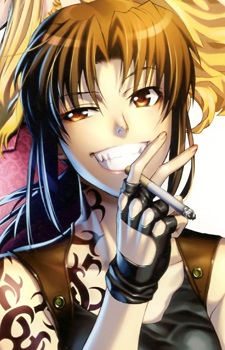 ' anime='
' anime='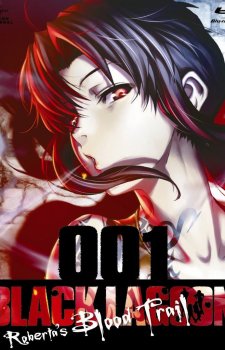 ']
']
Try to imagine yourself as Rock, formerly known as Okajima Rokuro. You work a 9 to 5 job (ok, but by Japanese standards let's say a 5am to 9pm job), your boss sucks, and your life is going nowhere. Then all of a sudden, you're kidnapped by pirates and end up suffering from a unique form of Stockholm syndrome. After going through shoot out after shoot out to a car chase, what's the next thing to do? Live Eric Cartman’s dream of being a pirate! When Revy responds to his question if he's in Hollywood, this one-liner practically became the strange answer to all of his problems. The way that Maryke Hendrikse casually delivers this line after a crazy gun chase shows either she’s telling the truth, or that Levy is a good actress. Either way, she’s offering Rock the chance of a lifetime. It also gives a more funny revelation to her nature as someone who is hotheaded and embraces it. The dub has been praised by fans and by the original studio itself.

9. Prince of Tennis
“まだまだだね (Mada Mada Da Ne)” - Echizen Ryoma
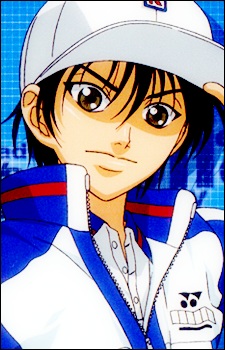 ' anime='
' anime='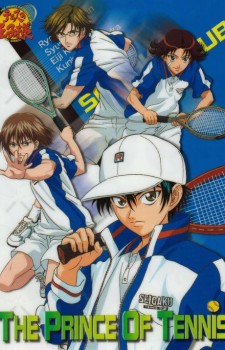 ']
']
You know the old saying “it’s not what you say, but how you say it?” Ryoma’s favorite line that he uses in almost every episode of “Prince of Tennis” is a Japanese phrase that embodies that. The original Japanese version has translated it as “You still have lots more to work on” in one episode, while the licensed version by VIZ translates it as “You still have a ways to go.” As stated before, this is just one of those Japanese phrases that only has meaning behind the context of how its used. It just means something hasn’t started or finished in just about any situation. It’s Ryoma’s way of trash talking meaning he is about to kick some ass after being on the losing end, or whenever he is holding back his abilities just to mess around. The great thing about this quote is that this is used in everyday Japanese. Take for example, you’re a boss at a company and someone gives you incomplete reports, you can just say “mada mada dane” to convey they are incomplete. Though it can be universally translated as “not yet,” not every situation can fit that translation and Ryoma’s use does not fit that. Heck, some Japanese girls sometimes find it cute if you say you learned this phrase from “Prince of Tennis.” However, it is actually very offensive in real life to use these words in a significant number of instances.
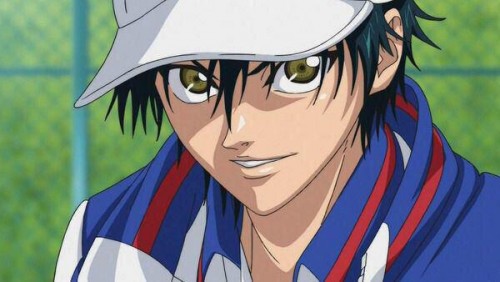
8. Neon Genesis Evangelion
“What’s wrong with running away from reality if it sucks!?” - Ikari Shinji
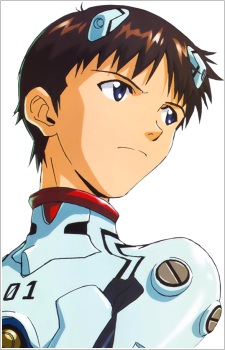 ' anime='
' anime='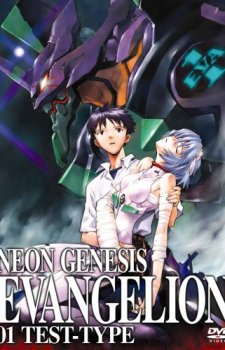 ']
']
While on a train ride with Rei, Rei tries to convey the truth with what Shinji is trying to deal with, and his reply is “What’s wrong with running away from reality if it sucks!?” In real life, the truth in any situation can be ugly for just about anyone. In Shinji’s own way in the dub, he does admit to having problems, and Rei is just trying to help him. In regards to the many psychological interpretations of “Evangelion” through traditional Freudian definitions in the view of western fans, after living in Japanese society and seeing how they treat mental illnesses such as depression, I think of this phrase and “Evangelion” as a whole as a metaphor on how Japanese society treats such people, which can be in itself, it’s own article.
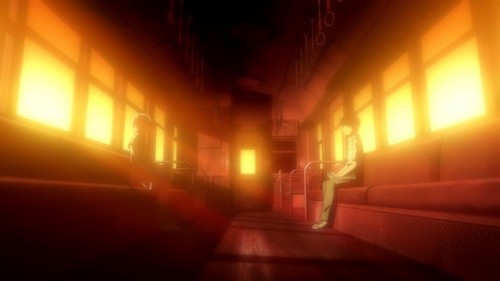
7. Naruto
“だってばよ (Dattebayo)/ Believe It!” - Uzumaki Naruto
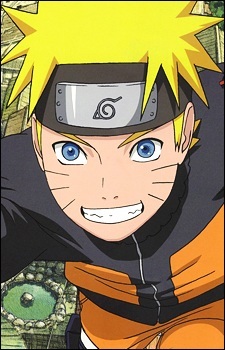 ' anime='
' anime='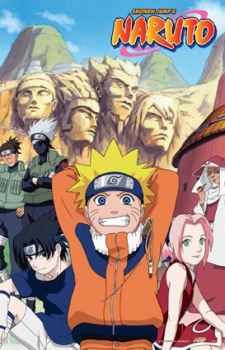 ']
']
If any one-liner defines the very essence of Uzumaki Naruto, it is certainly this one. In the original Japanese version, he likes to end his sentences in (dat) ttebayo instead of the standard “desu yo” or “da yo.” Unlike Himur Kenshin’s old school Japanese speech patterns ending in “gozaru,” (which was somewhat considered old school by the 1880s in Japan) there is really no direct translation to how Naruto ends his sentences. Kishimoto-sensei just wanted to make the character speak in a very unique way and that is what happened. The truth is, “dattebayo” is not even used in everyday Japanese and doesn’t technically exist. It was later revealed in the manga that he inherited this speech pattern from his mother, who tended to use the ending particle “ne,” while his son Boruto ends it in “sa.” This way of speaking makes Naruto’s speeches stronger, dramatic, and comedic all at the same time. If any of you readers converse with a Japanese style using Naruto’s speech pattern, a certain number of native Japanese speakers will instantly understand the reference. Since there is really no true English translation to “dattebayo,” the English version tends to create a whole new phrase, “believe it!” The phrase works in its own unique way because it is still a good representation to the spirit of Naruto’s character who is very goal oriented and will never let any obstacle stop him.
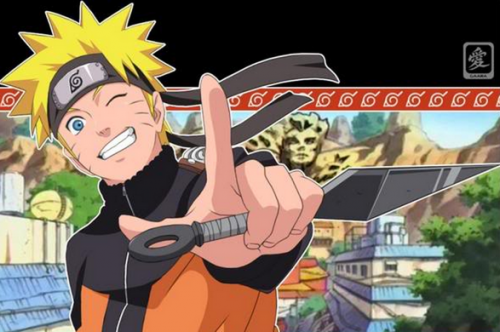
6. Hokuto no Ken
“お前はもう死んでいる (Omae wa mou shindeiru/You’re already dead)” - Kenshiro
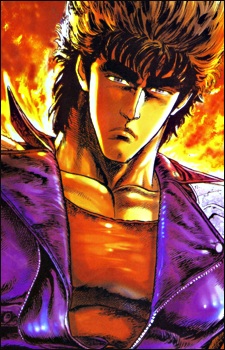 ' anime='
' anime=' ']
']
Probably one of Japan’s most famous lines is “Omae wa mou shindeiru,” or “You’re already dead” by Kenshiro from “Hokuto no Ken.” Kenshiro is the master of Hokuto Shinken, one of the world’s deadliest fighting styles. It relies on pressure point attacks and it makes the opponent explode within a matter of seconds. In many episodes, Kenshiro will always use his Hokuto Hyakuretsu Ken, or a technique that he uses 100 punches. Whenever his opponent is about to strike back, he just stands there telling them “Omae wa mou shindeiru” only to have them explode just shortly after. Despite the character being passed onto other voice actors like Koyasu Takehito and Japanese movie star Abe Hiroshi in recent years, they could not do Kenshiro like his original seiyuu, the legendary Kamiya Akira. Having a great mix of comedy and action roles (such as Mendo from “Urusei Yatsura” and Saeba Ryo from “City Hunter”), Kenshiro is probably his best performance and the way he delivers this famous phrase in an apathetic manner appropriately brings out his badass qualities.
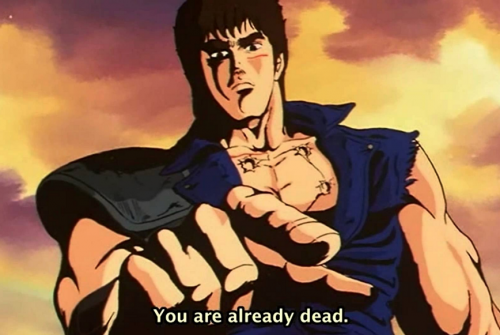
[ad_middle]
5. Dragon Ball Z
かーめーはーめーは (KAMEHAMEHA) - Son Goku, Son Gohan, Kuririn, Grandpa Gohan, Master Roshi, Cell
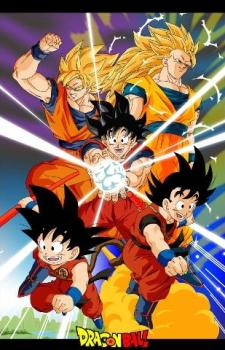 ' anime='
' anime='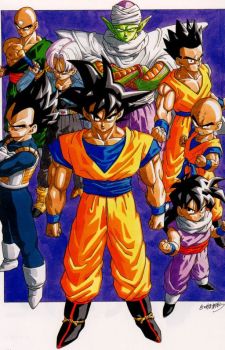 ']
']
Before the Hadouken in “Street Fighter II,” there was the Kamehameha from “Dragon Ball” first used by Master Roshi and later expanded to the main cast in which its power expanded to epic proportions. While thinking of a name to go with its pose, Akira Toriyama’s wife suggested the name of the first King of Hawaii, Kamehameha (though the Hawaiian pronunciation is different from the Japanese syllable system). Him and his wife thought the way the name sounded just simply went with the ridiculousness of Master Roshi’s character. Both the Japanese and English versions do a great job of making a ridiculous sounding technique more badass. Just not too long ago, a large number of Japanese schoolgirls took pictures of themselves acting out scenes from “Dragon Ball Z,” most notably the Kamehameha pose, and posted them throughout the Internet. Having worked at a girl’s high school in Japan, I had a chance to see such crazy antics.
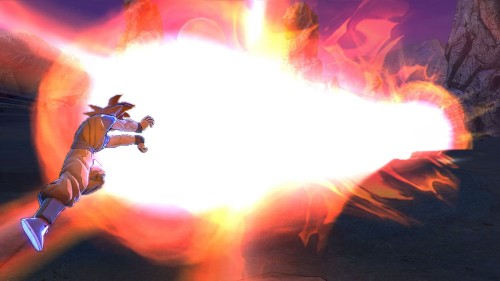
4. Death Note
You can call me what you like, but I will be taking your cake. - L Lawliet
 ' anime='
' anime=' ']
']
With Light handcuffed to L, Light is attempting to have a normal date with popular idol, Amane Misa. While at an office, Misa refuses cake with the usual feminine excuse that it makes you fat. L comes back with the gesture that if one uses their brainpower, they can still burn the calories and one thing leads to another with this argument with his surveillance activities. Feeling violated of her privacy, Misa calls L a pervert and he brushes off the accusation without a care as long as he has his cake that no one will seem to eat. The scene is a perfect example of L’s composure and dedication to his mission, and he still gets his cake because that’s what he does best. Alessandro Juliani’s (who not only does voice work for anime, but has appeared on “Stargate SG-1” and was also in “Man of Steel” as a military scientist) performance in the English version truly captures these qualities of him, while Yamaguchi Kappei’s (most famous as Ranma and Inuyasha), tends to make the childish side of him stand out more.
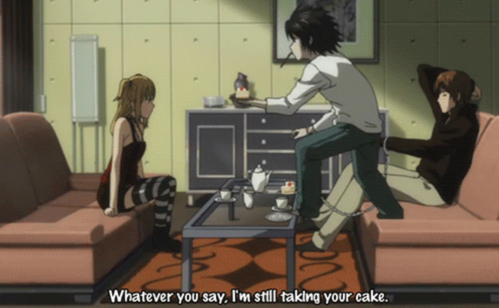
3. Fullmetal Alchemist
“食べてもいいよね?(Tabetemo ii yo ne?) Can I eat him? “ - Gluttony
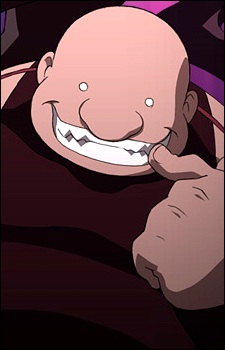 ' anime='
' anime='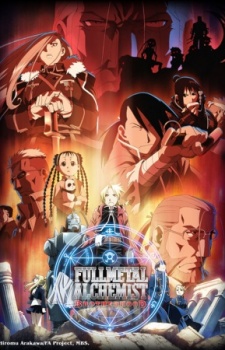 ']
']
Living up to his namesake, Gluttony just loves to eat and that is not just limited to food, but the people he fights. Due to his lower mental capacity in comparison to the other league of homunculi, Gluttony is always the muscle to another. With his mobility despite his size, he is as capable fighter. Before he faces an opponent, he always asks his accompanying boss if he can eat him or her. Both the Japanese and English versions delivery it in a way that makes him sound creepy like he’s some child molester and it perfectly reflects the expressions he makes. Every time he asks to eat someone, you just want to cower in fear.
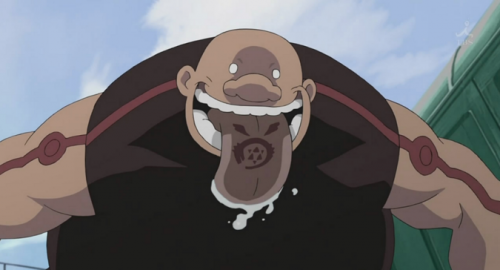
2. JoJo’s Bizarre Adventure
“このディオだッ! (KONO DIO DAA! IT WAS ME, DIO!)” - Dio Brando
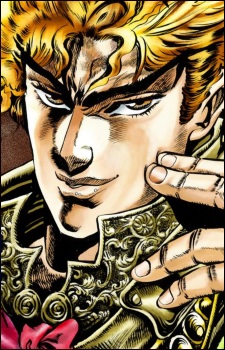 ' anime='
' anime='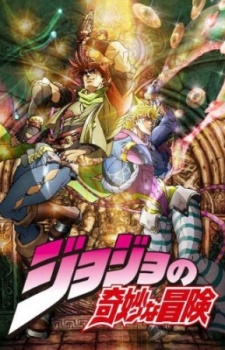 ']
']
“JoJo,” in its various story arcs, all contain countless catch phrases you can buy on pins, coffee mugs, and t-shirts at a Jump store in Japan. Though, Dio has his share of scheming catch phrases and battle cries such as “WRY” and “ZA WARUDO” (it just feels more “natural” and “exotic” in Japanese style English compared to just simply, “the world” in natural English) that were made iconic through Chiba Isshin’s portrayal in the old school Capcom fighting game. If there is a new Dio quote that is popular, it’s “KONO DIO DA!!!” Or officially translated as “IT WAS ME, DIO!!” In the beginning of the first story arc, Dio is still a pre-teen living in Victorian England and wants to ruin the life of Jonathan Joestar. He goes as far as stealing the first kiss of Erina, a woman that Jonathan is trying to court. Seeing this, is the truth why Dio brags about it with this line. What makes it so awesome is Koyasu Takehito’s over the top delivery. Granted, the way he screams “ZA WARUDO” may not be as awesome as Chiba Isshin’s, but Koyasu’s performance along with how the evil expression on his face is framed brings a new life to a line which was published in the original manga nearly thirty years ago. Last, the dramatic background music and the sound effect to Erina’s action with what I call the “shock spark” coming out of her head just adds more flavor to it.
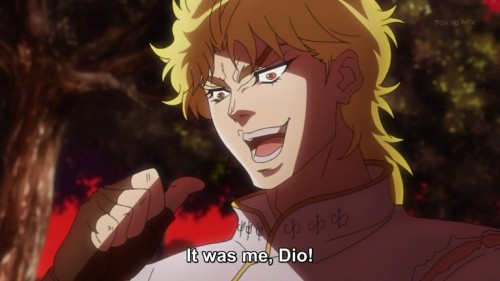
1. Slam Dunk
“俺は天才だ!(Ore wa tensai da! I’m a basketball genius!)” - Sakuragi Hanamichi
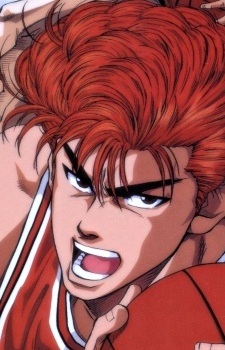 ' anime='
' anime='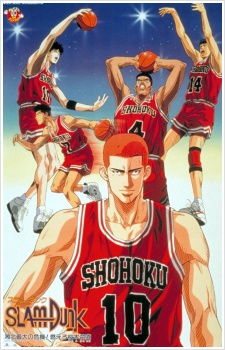 ']
']
If there is one reason that inspired us to make this list, it was this quote from the hit series, “Slam Dunk.” Just by seeing the numerous t-shirts in Tokyo and Yokohama, it just had to be number one. This constant one-liner by Sakuragi is the perfect definition of his character –that he's full of himself and all the confidence in the world. This line is wonderfully brought to life by Kusao Takeshi, who hardcore “Dragon Ball Z” fans are likely to know as the voice of Trunks. If fans of “DBZ” watched it in the original Japanese and have an ear for certain seiyuus, his voice is rather recognizable and he tends to have a very rough and comedic approach in his role to Sakuragi. What motivates him to constantly boast the fact that he's a genius is because of Haruko, a girl he has a crush on. Due to Haruko openly praising Sakuragi having the potential to be a great basketball player because of his natural physical attributes, Sakuragi opens his heart to the sport despite starting out not knowing the difference between dribbling a ball in basketball and soccer. With a combination of his genetics and the hard work he puts in to knowing the basics, there will be moments when his claim of being a genius will be serious, and not in a comedic delivery whenever he bickers with his romantic rival, Rukawa.
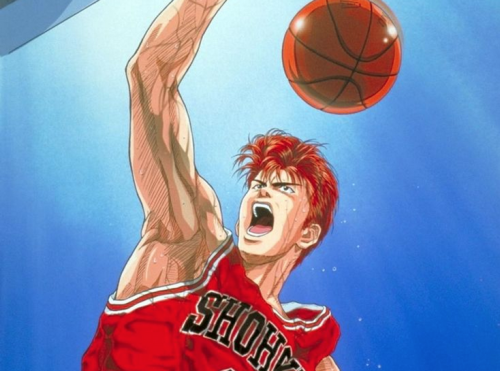
With all the anime out there, I am sure many readers have their own favorites. Please feel free to share them in the comment box below! Some work in their original Japanese, and some work or find a distinct new kind of life in the English versions. If you watch anime in any other languages, are there any other famous phrases or one-liners out there that are popular to that language? Please let everybody know!
[Editorial Tuesday] Anime Influence In Western Media

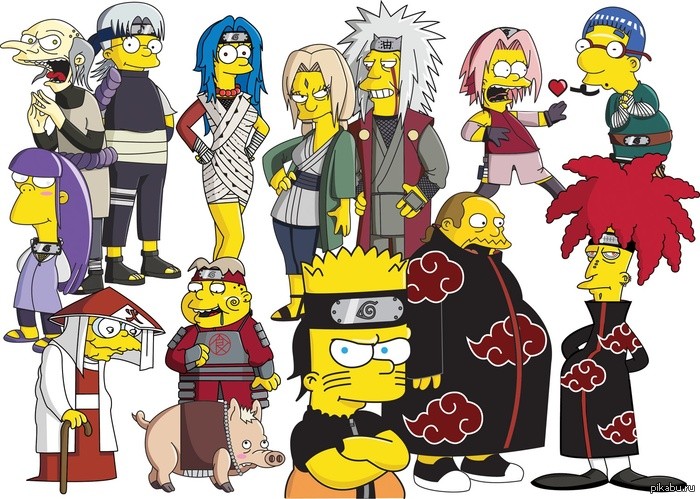
After doing the top ten anime that could work as a live action list and Honey’s article on the so-called decline of anime, we thought it would be nice to review the reach anime has had on western media art forms and artists the past twenty years. Not too long ago, Barack Obama did thank Shinzo Abe for anime. Anime is known for its distinct take in expanding the imagination that many thought was impossible, and it has inspired many artists around the world from music, movies, and animation.
Celebrity Anime Fans
Thanks to the old Toonami block and now the Internet, what started out as a small cult-like hobby going back to the 1980s, has been reaching more audiences. These “audiences” include a good number of mainstream celebrities in the west who have been open for their love for anime. For starters, the late great Robin Williams was a big fan of “Neon Genesis Evangelion,” and in “One Hour Photo,” one of his feature films, he presents an “Evangelion” model kit to achild. Former “Spider-Man” star Tobey Maguire is a huge fan of the Americanized “Robotech” franchise. Former Disney child star Zac Efron happens to be a fan of “Deathnote,” and “Transformers” co-lead Megan Fox has expressed her love for “Sailor Moon” and wishes to be in an American adaptation.
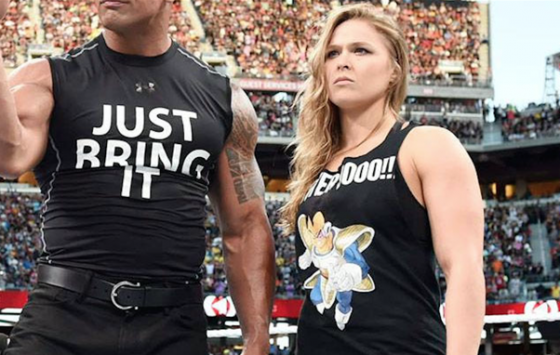
As stated in some previous articles, in the sports world, Spanish tennis star Rafael Nadal and presently undefeated UFC Women’s champion Ronda Rousey are very hardcore “Dragon Ball Z” fans. Rousey actually happens to have a very deep knowledge of “Pokemon” as well. When former UFC heavyweight champion Josh Barnett competed in Japan’s mixed martial arts circuit, his entrance song was “Ai wo Torimodose” from “Hokuto no Ken,” and would always say to his opponents in Japanese “Omae wa mou shinde iru” as a means of trash talking to also excite the Japanese crowd. Controversial pro-wrestling legend Hulk Hogan happens to be a fan of “Pokemon” and “Kinnikuman.” Fellow pro-wrestling icon and Make-A-Wish contributor John Cena is a fan of anime and says “Hokuto no Ken” is his favorite animated work as a whole. Three division boxing champion Nonito Donaire is a huge fan of “Hajime no Ippo” and when he had his honeymoon in Japan, he had the opportunity to meet Morikawa Joji, the creator, and Morikawa-sensei compared him to fellow counter specialist Miyata Ichiro, one of the characters (though many fans of boxing and “Hajime no Ippo” compare him to Randy Boy, Jr.).
Anime in Western Music
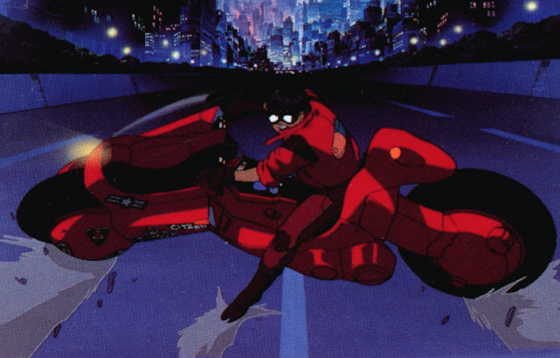
In addition to famous movie stars and accomplished athletes being inspired by anime, many hit musicians have paid homage to anime in their work, too. In the video to Michael Jackson and Janet Jackson’s 1995 classic single “Scream,” clips of “Akira” and “Babel II” are featured. Next, self-proclaimed genius turned 2020 U.S. Presidential candidate Kanye West happens to openly be an anime fan. In his cover of “Stronger” by Daft Punk, the music video itself pays homage to “Akira,” his favorite anime. Speaking of Daft Punk, the legendary Leiji Matsumoto animated their musical feature, “Interstella 5555.” Next, the music video to “Ex-Girlfriend” by No Doubt pays homage to the risqué anime film “Kite,” which recently received a live action adaptation. “One Week,” the 1998 breakout hit by The Barenaked Ladies makes reference to “Sailor Moon,” and French pop sensation Alize has a tattoo of Sailor Moon on her arm, too.
Popular Western Animation Paying Homage to Anime
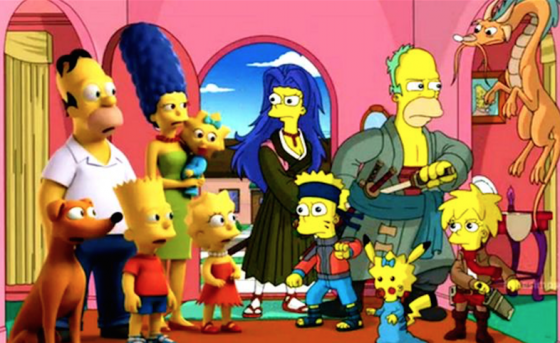
If there have been any famous American animated programs that have openly shown their love for Japanese anime showing the effect it has had internationally, it is the two long-running comedy hits, “The Simpsons” and “South Park.” One of the first times “The Simpsons” made reference anime is the 1999 episode of when the family went to Japan, and there was a scene that spoofed the “Pokemon” seizuregate incident (if there is no term for that fiasco, then Honey Anime can coin that!!!) back in 1997. After Hayao Miyazaki’s retirement, “The Simpsons” paid tribute to his respective works by including his characters in a cameo when Comic Book Guy marries a Japanese manga artist. In the 2014 edition of “Treehouse of Horror” of when The Simpsons explores alternate realities of the family itself, one reality has them as anime characters such as Bart as Naruto, Maggie as Pikachu, and Lisa as Mikasa from “Attack on Titan.” One couch scene gag had Lisa as Sailor Moon Bart as Astro Boy. Though “The Simpsons” doesn't exactly take full inspiration from anime, it has shown tremendous respect and love. “South Park” creators Matt Stone and Trey Parker have openly parodied anime in some of their most famous episodes. In fact, Trey Parker happens to be fluent in Japanese and whenever Japanese language is used, it is him speaking. One of their first homages to anime is the “Chinpokomon” episode. In the theatrical film, how Cartman defeats Saddam Hussein pays homage to “Dragon Ball Z.” The ninja episode also takes influence from anime by having the characters re-imagined as anime characters, and the battle features a Japanese song paying homage to anime Shounen intros. In the trilogy of episodes that parodies the PS4 and X-Box One console wars and “Game of Thrones,” Princess Kenny is a reference to both “Sailor Moon” with the transformation brooch and his theme song is a spoof/homage of “Princess Lover!”
Featured Films and Cult TV Hits Inspired By Anime
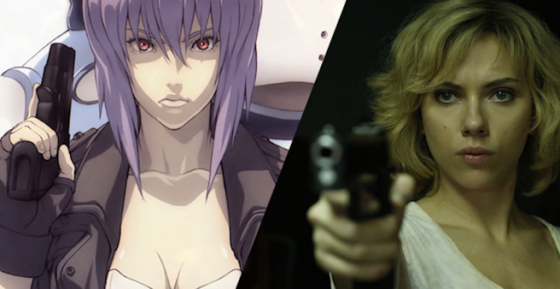
Beyond (the God awful) attempts of Hollywood adapting anime to live action, most notoriously “Dragon Ball Evolution,” many hit feature films do take inspiration from anime. The most famous example being “The Matrix” trilogy with “Ghost in the Shell.” It shares very similar themes with the relationship between humans and technology, similar use of colors and lighting, and action sequences. In turn, other movies have been inspired by the cinematography of “The Matrix,” and ultimately, there is GITS to thank for that. Plus, let's not forget “The Animatrix” collection done by numerous anime directors such as The Detective Story by Shuichi Watanabe of “Cowboy Bebop” fame. But if there is one movie that openly admits to taking inspiration from anime, it is Christopher Nolan’s “Inception.” It is partially inspired by Satoshi Kon’s “Paprika,” where a machine is used to access the dreams of people. “Perfect Blue,” another hit by Kon, also served as an inspiration to the Academy Award winner, “Black Swan.” It shares very similar themes and plot points of an inspiring performer who is trying to achieve fame but at the cost of her sanity. In the popular “Kill Bill” movies, Production IG “The Origin of O-Ren Ishio”. Another easy and obvious example is “Pacific Rim.” Is the story of giant robots fighting monsters in a post-apocalyptic world? Sound familiar to you? Look no further than “Evangelion.” In Norm Macdonald’s (former and the best ever SNL Weekend Update host) sitcom, there is a scene where him and a child do a parody session of “Pokemon.” Before Joss Whedon made it big with “The Avengers,” he created a small but dedicated fan base in his TV show, “Firefly.” When it first debuted on TV, it was shortly after “Outlaw Star” hit Cartoon Network, and its foundation of a rag tag group of space smugglers who find a naked girl in a box that an evil intergalactic government wants could no way be a coincidence. Back in 2001/2002, fans of “Outlaw Star” quickly accused “Firefly” of being a rip off. The best notable example of Hollywood openly portraying anime fandom is through Hiro Nakamura of “Heroes.” The character (and Masi Oka himself) are self-proclaimed otakus. Hiro’s powers of manipulating time has been confirmed to be an inspiration of Dio, the villain of “Jojo’s Bizarre Adventure,” having such an ability. Unfortunately, Hiro doesn't have a cool phrase such as ZA WAARUDO to activate it. In western animation, one perfect example is “The Lion King” with “Kimba the White Lion,” but Disney for some reason denies this and some of the staff reportedly said they never heard of Kimba. Even Matthew Broderick who voices the adult Simba thought he was doing an adaption of “Kimba” when he initially read the script. Heck, “The Simpsons” made a joke about it in one episode of the mid-1990s. Unlike Tom Brady’s fiasco with deflategate, the evidence is overwhelmingly damming so Disney should own up to it. Both share many similar plot points, characters, and cinematography. If that's a coincidence, then it's too good to be true. Another Disney animated feature that takes (or some would say rip-off) influence from anime is “Atlantis” with Gainax’s “Nadia.” Ultimately, nobody can say one ripped off or influenced the other in terms of story because they are both ultimately inspired by “20,000 Leagues Under the Sea” by Jules Verne. Still, one cannot deny the notable similarities in definition of character design unless those were also, the designs of the original French novel.
Western Animation Taking From Anime
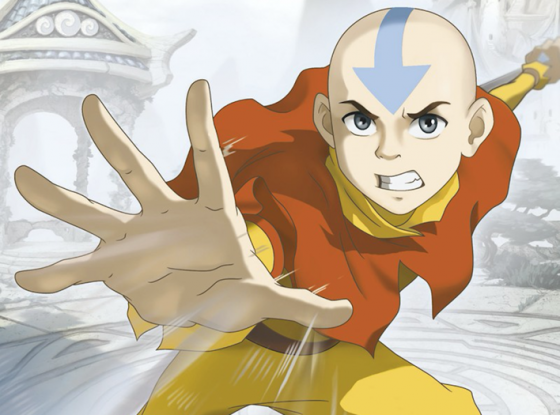
If there is any way to conclude this article, it is sharing how western animated studios have used anime-style designs in their shows. Many western artists saw the distinct story telling and visuals that anime has and have successfully adapted it in their respective shows. The most famous example of this is Nickelodeon’s Emmy awarding winning hit, “Avatar The Last Air Bender.” Considering its heavy Eastern influences, it was rather natural that an anime approach would best compliment its cultural origins. The show was so distinct from other western animated programs to the point that some viewers with little to no knowledge of anime thought it was really a Japanese show, and not American. Another western U.S. animation shows that artistically takes influence from anime is Adult Swim’s “The Boondocks,” based on the comic strip by Aaron McGruder. McGruder is a long time anime fan, and “Akira” and “Cowboy Bebop” happen to be his favorites. “Teen Titans” from the mid-2000s took a lot from anime in a design sense and had J-pop duo Puffy Ami Yumi sing the theme song. Another hit U.S. animated classic that takes influence from anime is “Afro Samurai” paying tribute to both blaxploitation and “Ninja Scroll.” One of the originators of bringing anime-style drawings to American mainstream animated programs is Cartoon Networks’s classic, “The Powerpuff Girls.” The design of the main trio is a spoof of Shoujo and the over-the-top action pays homage to the balls to the walls action sequences only anime can provide. A couple of more early examples of anime influenced western animated works are “Batman Beyond” and France’s “Totally Spies.” The Gotham City of 2049 takes a lot of inspirations from Neo-Tokyo classics such as “Akira” and “Bubblegum Crisis,” and “Totally Spies” is a western take on the Shoujo genre.
Closing
With anime’s influence from cult hits to ground breaking Emmy and Academy Award winning feature films, anime is not going away anytime soon and will continue to inspire artists around the world. With the rise of the Internet, we will see more works inspired by anime. As stated in the top what anime can work as a live action list, with the rise of YouTube, fans can express the creative influences anime has had on them. Please check them out. Has anime at all influenced you artistically? Or have you seen any western movie or TV program influenced by anime we may have missed? If so, please share.
What is Fujoshi? [Definition, Meaning]

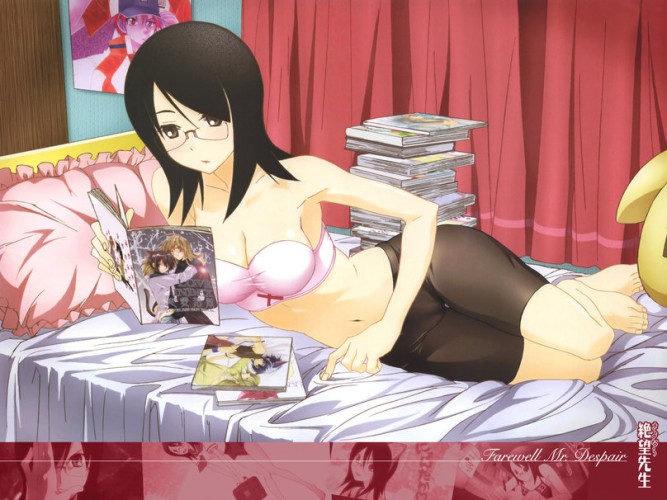
Harumi Fujiyoshi "Sayonara Zetsubou Sensei"
If you often watch anime and read manga, you have probably come across the word “otaku” before. Heck, you even probably call yourself an otaku. An infamous word in Japan used to describe people with a specific passion, otaku has become the signature term globally for the consummate anime and manga fan, and can frequently be found here on Honey’s Anime, a website which specializes in “OTAKU Reviews & Recommendations.”
Making waves among fan communities currently, and bearing similarities to otaku with drastically different connotations is a new term referring to a particular type of female fan: fujoshi. Like otaku, the term“fujoshi” originated in Japan and has since spread globally. What does fujoshi even mean and how is it used today? This article sets out to answer these questions by briefly examining the Japanese word itself and the history behind it and also by taking a look at notable fujoshi representations in anime.
Now without further ado, let’s get rotten.
Fujoshi History and Etymology:
One can’t speak of fujoshi without first mentioning Boys Love. What would perhaps be called “gay porn” by those unfamiliar with it, Boys Love (often shortened to BL) refers broadly to media – often manga, anime, and light novels – depicting male-male love narratives with Japanese women as the targeted audience. Most people outside of Japan have probably heard yaoi used instead of BL when talking about media representing such narratives. Yaoi has been used and is still being used as an all-encompassing term much like BL to indicate these male-male fictions, though in in recent years in Japan, BL has eclipsed yaoi since its birth as a commercial genre in the 1990s.
The predominant demographic consuming and producing BL are widely viewed as Japanese women ranging in their early-teens to mid-to-late forties frequently called and self-identified as fujoshi, a term that literally translates to “rotten women.” While women who consumed and produced BL have existed since the 1970s, the conception of a particular type of women, the fujoshi, associated with BL appeared in the early 2000s on 2-chan, a popular messaging board website in Japan.
Since its first appearance on the Internet (within Japanese BL fan culture), fujoshi has become only one of many terms used to describe women with these interests. Despite this, it is by far the most commonly used term among BL fans and mainstream media in Japan (Saito, 2011: 171–3).
In Japanese, fujoshi is a homonym for “fujoshi” written as 婦女子, meaning a woman or grown woman. In this instance, fujoshi uses the kanji characters 腐女子 with 腐 meaning rotten and 女子 still meaning girl or woman. Fujoshi can be directly translated as “rotten woman,” however it gains a sense of self-deprecating humor due to its dual homonym meaning. This dual meaning perhaps reflects the standing of fujoshi culture in relation to the rest of society. Often times, fujoshi hide their media preferences, instead relying on coded language to communicate with other fujoshi in the public sphere. Fujoshi can be said to have a dual nature in this way: their “fujoshi” woman side and their “fujoshi” rotten side (Okabe et al., 2012).
Much like otaku, the term fujoshi has since spread among fan communities inside and outside of Japan and has appeared in many anime series. The following is a short list of notable anime featuring fujoshi characters.
Anime with Fujoshi Characters:
Genshiken Nidaime
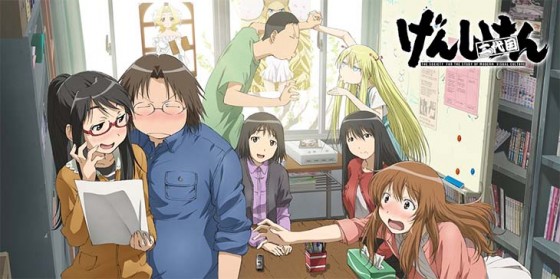
While Genshiken is widely known as the series that exposes the everyday life of an otaku, Genshiken Nidaime, the continuation of the original seinen anime and manga series, illustrates the everyday lives of fujoshi. With Ogiue Chika becoming the club president of Genshiken, the formerly male dominated club soon takes on a particular BL bent when a fujoshi freshmen joins the club.
In Genshiken Nidaime, we have a full cast of otaku, ranging from a history otaku to a cosplay otaku. Yet, their common interest in BL binds these characters together. What is particularly remarkable about Genshiken Nidaime is that not only does it depict fujoshi characters like Ogiue, but also fudanshi (the male counterpart of fujoshi), as embodied by Hato Kenjiro. Taking gender bending to the max, Genshiken Nidaime is perfect for those interested in the gendered dimension of media consumption and fan identity.
Ouran High School Host Club
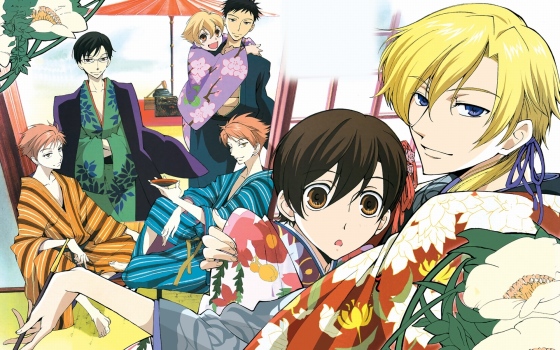
A slight blast from the past, Ouran High School Host Club does have its lone fujoshi: Houshakuji Renge. Perhaps better known as the girl who believes she is Kyoya Otori’s fiancé because he resembles a video game character she loves, Renge is not merely interested in male/female romance. Rather, on more than one occasion, she gives her fellow female classmates insight on love between men. Though she’s a side character, Renge provides comedic relief in a show that is already hilarious.
Barakamon
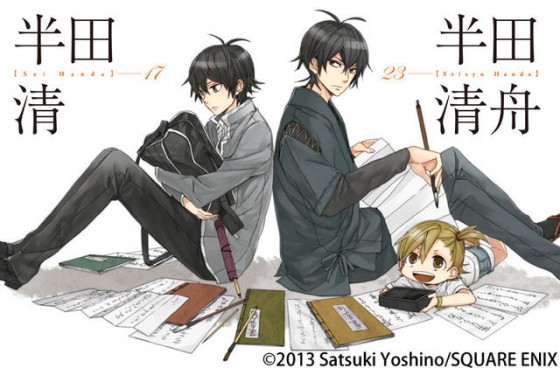
While Tamako Arai is not the main focus of Barakamon, her well-meaning presence and complex about being a fujoshi provides insight into what could be called the “fujoshi lifestyle.” For those looking for a quality show with a hint of “rotten-ness,” Barakamon might just be up your alley.
Barakamon, a 2014 summer hit, follows the story of professional calligrapher Seishū Hanada as he retreats to the island of Gotō to discover his own calligraphy style. While living on this island, he encounters a young girl named Naru Kotoishi and other eclectic characters that teach him more about life.
With hopes, this article has given you a taste of what fujoshi is. As there are many facets to fujoshi culture, I have only briefly defined the meaning of the term itself. If you are interested in learning more about fujoshi, there is a quite a bit of academic literature published on the subject. Following is a short list of recommended titles for the curious. If you have any questions, comments, or complaints about this article or the list, please feel free to write them below!
Recommended Reading:
- Aoyama, Tomoko. “BL (Boys’ Love) Literacy: Subversion, Resuscitation, and Transformation of the (Father’s) Text.” U.S.-Japan Women’s Journal 43, no. 1 (2013): 63–84. doi:10.1353/jwj.2013.0001.
- Fujimoto, Yukari. “Transgender: Female Hermaphrodites and Male Androgynes.” L. Flores & K. Nagaike, Trans.). Edited by S. Orbaugh. US-Japan Women’s Journal 27 (2004): 76–117.
- Galbraith, Patrick W. “Fujoshi: Fantasy Play and Transgressive Intimacy among ‘Rotten Girls’ in Contemporary Japan.” Signs 37, no. 1 (Spring 2011): 211–32. doi:10.1086/660182.
- Galbraith, Patrick W., and Thomas Lamarre. “Otakuology: A Dialogue.” Mechademia 5, no. 1 (2010): 360–74.
- Matsui, Midori. “Little Girls Were Little Boys: Displaced Femininity in the Representation of Homosexuality in Japanese Girls’ Comics.” In Feminism and the Politics of Difference, edited by Sneja Marina Gunew and Anna Yeatman, 177–96. Allen & Unwin, 1993.
- Mizoguchi, Akiko. “Male-Male Romance by and for Women in Japan: A History and the Subgenres of Yaoi Fictions.” US-Japan Women’s Journal 25 (2003): 49–75.
- Nagaike, Kazumi. “Elegant Caucasians, Amorous Arabs, and Invisible Others: Signs and Images of Foreigners in Japanese BL Manga.” Intersections: Gender and Sexuality in Asia and the Pacific 20 (2009): 29.
- Nagaike, Kazumi, and Tomoko Aoyama. “What Is Japanese ‘BL Studies?’: A Historical and Analytical Overview.” In Boys Love Manga and Beyond: History, Culture, and Community in Japan, edited by Mark McLelland, Kazumi Nagaike, Katsuhiko Suganuma, and James Welker, 119–40. Jackson: University Press of Mississippi, 2015.
- Okabe, Daisuke, and Kimi Ishida. “Making Fujoshi Identity Visible and Invisible.” In Fandom Unbound: Otaku Culture in a Connected World, 207–24. New Haven: Yale University Press, 2012.
- Saito, Kumiko. “Desire in Subtext: Gender, Fandom, and Women’s Male-Male Homoerotic Parodies in Contemporary Japan.” Mechademia 6, no. 1 (2011): 171–91. doi:10.1353/mec.2011.0000.
[recommendedPost post_id='88343' url='' title='' img='' class='' widget_title=''] [recommendedPost post_id='109829' url='' title='' img='' class='' widget_title='']